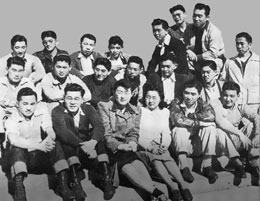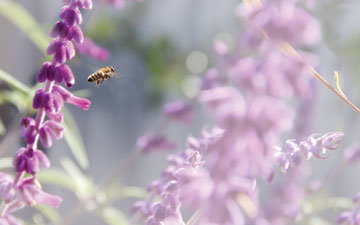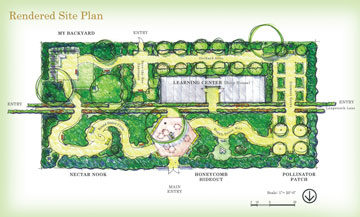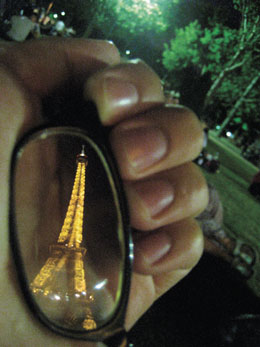Volume 27 · Number 1 · Fall 2009
News & Notes
Spreading the Budget Pain
Student fee hikes, employee furloughs follow $114 million in funding cuts.
How the campus dealt with the first $80.5 million shortfall for 2009–10:
- $22 million in savings from employee furloughs
- $20.5 million in cuts to academic and administrative units
- $17 million in added revenue from the systemwide student fee increase, and additional student fee revenue from overenrollment
- $7.5 million in savings from debt restructuring for general campus projects
- $6 million in savings from canceling or deferring centrally funded activities and projects
- $5 million in savings from a slowdown in faculty hiring.
- $2.5 million in added revenue from an increase in nonresident tuition, plus additional nonresident enrollment
A new academic year, new students, a new chancellor — and a $33.5 million state funding gap to close.
With nearly 32,000 students enrolled in classes, UC Davis was looking for ways to make new budget cuts after already dealing with an $80.5 million state funding shortfall for 2009–10.
A combination of academic and administrative cuts, student fee increases and salary savings from employee furloughs helped close that first shortfall. The additional cuts were the result of the new state budget adopted by the Legislature and Gov. Arnold Schwarzenegger in late July.
UC Davis’ finances were a top priority for new Chancellor Linda Katehi. “Most immediately, in the days ahead, we must stabilize our state budget,” she said in a letter to the campus community in her first day on the job in August.
“UC President Mark Yudof has called for shared sacrifice in the short term, and the regents have launched a commission on the long-term future of UC,” she wrote. “They recognize that furloughs, salary reductions and steadily increasing student fees are simply not sustainable, and that ingenuity and determination are required if we are to ensure the continued long-term quality of this university.
“I share that view, knowing that we have difficult choices ahead to close this year’s budget gap, to resolve uncertainty, and to identify ways that will ensure financial stability and preserve our capacity to lead. We will do that together, openly, honestly, and with care because these choices have deeply personal consequences. And, at the same time, we will focus intensely on identifying and responding to new opportunities that have the potential to help us financially but also bring the academic excellence and vitality our institution strives for.”
Some of the answers may come from a long-term budget planning process that so far has yielded reports from five subcommittees: administration, capital budget and space planning, instruction and research, self-supporting activities and student services.
Provost and Executive Vice Chancellor Enrique Lavernia originally charged the subcommittees with working toward budget savings for 2010–11. But with the new cuts, he began examining the reports for budget-saving actions that could be implemented earlier.
UC regents voted in May to raise student fees — the educational fee by 10 percent and the registration fee, 4.2 percent; the average of both is 9.3 percent for undergraduates, graduate students and professional school students.
The fee hikes amount to $662 for undergraduates who are California residents, bringing their total systemwide fees to $7,788. With campus-specific fees, average total fees in the UC system come to approximately $8,720 for resident undergraduates (or $10,405 at UC Davis, with campus fees and health insurance added).
The fee hikes amount to $750 for resident graduate academic students, bringing their total systemwide fees to $8,736 (or $11,521 at UC Davis).
Nonresident tuition (paid on top of UC-wide and campus fees) increased 10 percent to $22,021 for undergraduates, and stays the same at $14,694 for graduate students and $12,245 for professional students.
A UC-wide employee furlough plan took effect Sept. 1, by order of the regents. Most employees have been ordered to take 11 to 26 days without pay, through Aug. 31, 2010; this translates into salary reductions of 4 percent to 10 percent. The higher the salary, the more furlough days the employee must take.
The UC Office of the President, in setting up the furlough plan, authorized each campus to decide how to implement the furloughs — and UC Davis was still working that out as the magazine went to press. One option under consideration was to shut the campus down on specified days.
‘A Small Measure of Justice’

Members of the Cal Aggie Japanese Students Club posed for this group photo for the 1942 El Rodeo yearbook. The club sought, among other things, to ìpromote good fellowship with other studentsî on the Davis campus.
Honorary Degrees offered to former Japanese American students
Frank Ogasawara was in his third year at UC Davis in 1942 when President Franklin Roosevelt declared war on Japan and authorized the internment of Japanese Americans. Ogasawara was one of approximately 700 men and women forced to leave their studies at four UC campuses — Berkeley, Los Angeles, San Francisco and Davis.
The Davis campus closed during World War II, and Ogasawara went to Utah to work in the sugar beet fields, harvest fruit and process turkeys. After the war, he resumed his studies, eventually earning a Ph.D. from UC Davis in 1957. He went on to become a beloved professor of avian and animal sciences on campus and to found the California Raptor Center.
However, not all of the former UC students were able to complete their degrees — until now. In June, the University of California Board of Regents voted to grant special honorary degrees to those students, whether living or deceased, as recommended by a UC task force co-chaired by Vice President of Student Affairs Judy Sakaki and UC Davis Professor of Law Daniel Simmons. The diplomas will bear the Latin inscription Inter Silvas Academi Restituere Iustitiam — or “to restore justice among the groves of the academe.”
“This action is long overdue and addresses an historical tragedy,” said UC President Mark Yudof. “To the surviving students themselves, and to their families, I want to say, ‘This is one way to apologize to you. It will never be possible to erase what happened, but we hope we can provide you a small measure of justice.’”
For more information, contact HonoraryDegree@ucop.edu or (510) 987-0239.
A Garden to Bee-lieve in
UC Davis efforts to save the honeybee attract widespread support.

(Kathy Keatley Garvey/UC Davis)
Being a honeybee just got sweeter with the creation of a garden at UC Davis devoted to their well-being.
The garden, at the Harry H. Laidlaw Jr. Honey Bee Research Facility near the campus airport, was built with the help of Häagen-Daz to promote bee health and build awareness of the insects’ plight.
Interconnecting garden rooms, like the “Nectar Nook” and “Honeycomb Hideout,” feature bee-friendly plants that will feed bees from UC Davis’ research colony all year. Bees — and people too — will be able to buzz around the “Waggle Dance Way” and “Save the Bee Sanctuary” pathways.
The garden design by a Sausalito landscape architecture/exhibit design team was selected from among 30 entries in an international competition. A ribbon-cutting ceremony is set for Oct. 16.
Honeybees around the world have been mysteriously dying off in unprecedented numbers since 2004. Even UC Davis’ research bee colony has been suffering a 30 percent decrease in its population each winter.
Humans will be negatively affected if bees continue to die in such large numbers. “This is a real problem for agriculture,” said Lynn Kimsey, professor and chair of the entomology department and director of the Bohart Museum of Entomology. “At least 60 major crops, ranging from almonds to cherries, to cotton, even avocados, require honey bee pollination. No bees, no food.”

Sausalito-based landscape architects Donald Sibbett and Ann Baker, interpretative planner Jessica Brainard and exhibit designer Chika Kurotaki submitted this winning design for a bee-friendly garden near the campus bee research facility. Click on image for enlarged view.
The new garden is a first step in saving them, Kimsey said.
“The garden, first and foremost, is to keep the research colony bees healthy and happy,” she said of the bees that sometimes travel to the opposite side of Davis to find food. “Next is to educate.”
Häagen-Dazs donated $125,000 for the garden. “We were wanting to do something a little different than just donate the money,” said company representative Diane McIntyre. “We also wanted to make a statement.”
The company, which uses products pollinated by bees in half its ice cream flavors, has donated a total of $500,000 to bee research at UC Davis and Pennsylvania State University over the past two years. And it created a new honey vanilla ice cream — all proceeds go to the bees — to bring attention to the bee crisis.
Many others have come to the bees’ aid as well. “The more people become aware about it, the more they help,” Kimsey said.
An 11-year-old San Francisco girl, Sheridan Miller, raised $733 for the bee research center by selling baked goods, candles and homemade cookbooks featuring recipes with bee products, bee poems and famous bee quotes.
A Paso Robles candle company, VERIS, donates money to the UC Davis bee researchers from the sale of every “Bee Grateful” beeswax candle. “There was a tattoo parlor that wanted to do honeybee tattoos and give us the proceeds,” Kimsey said.
But you don’t have to get a tattoo to show your support for bees. Planting bee-friendly gardens — with plants like sages, lavender, apples and citrus trees — may be one of the best ways to give them a better chance at survival.
Planting tips can be found at the new UC Davis garden. For more information on honeybees, visit the entomology department's bee biology site or the Häagen-Dazs "Help the Honey Bees" Web site.

(Sylvia Wright/UC Davis)
Get Out the Photo Vote
UC Davis needs your help in picking the winning shots for an Education Abroad photo contest. The third annual competition is open to UC Davis students who participated in an Education Abroad program from September 2008 through summer 2009. Students may enter photos Oct. 1–25 in the following three categories: natural and urban landscapes, people and culture, and Aggies abroad. Visit the UC Davis homepage or the Education Abroad Program site during Oct. 26–Nov. 24 to vote for a favorite in each category. A photo that John Christopher Aragon ’08 took, right, of the Eiffel Tower reflected in his sunglasses was one of the winners in the 2007 contest.
